![]()
If the 90s era of Pakistan cricket was known for something, it was talent… wasted talent. For a side that carried match-winners like Wasim Akram, Waqar Younis, Shoaib Akhtar, Mushtaq Ahmed, Saeed Anwar, and Inzamamul Haq, to name a few, there was woeful underachievement.
Sure, Pakistan won the 1992 World Cup, but with the retirement of Imran Khan soon after, the team went in a downward spiral. Thanks to constant in-fighting to allegations of match-fixing to backstabbing politics within the squad, Pakistan didn’t win nearly as many Test series and limited-over tournaments as they should have.
[caption id="" align="alignnone" width="533"]![]() Pakistan celebrate in triumph after winning the 1992 World Cup despite not being favourites. Photo: ESPNcricinfo[/caption]
Nothing exemplified this more than Pakistan’s tour to South Africa in the mid-90s, where during an ODI tri-series that Pakistan dominated in the first half, all hell broke loose after some cricketers blew the whistle on match-fixers, after which Pakistan crashed in the tournament.
One of the cricketers respected for his stance on match-fixing was Aamir Sohail, a gutsy left-handed batsman who could on his day be more explosive than the more naturally gifted Saeed Anwar. After Sohail won the hearts of the public for his brave attitude on and off the field, some rumors began to spread in the media about his hot-headedness in the dressing room.
Many didn’t give credence to these reports until Pakistan played India in the 1996 World Cup quarter-final in Bangalore, where Sohail was suddenly made captain after Akram pulled out of the match due to an injury. Here, India hammered Pakistan when they batted, setting Pakistan a target of 288 in 49 overs, which in 1996 might as well have been 350.
Apparently, Pakistan faced a lot of abuse from the Bangalore crowd, including threats of violence, and when their turn came to chase, the atmosphere was so tense that you could feel it through your television sets. At the time, Pakistan was regarded to have the best ODI opening batsmen in the world, and the duo of Sohail and Anwar began to show why they had that reputation.
https://www.youtube.com/watch?v=XF6hK4M4JuE
The two made mincemeat of the Indian attack, and by the time Anwar fell at 84, Pakistan had an incredible run rate and it looked like easy sailing for the visitors. Unfortunately, cooler heads did not prevail.
At a point when singles, doubles and the occasional boundary would have taken the team home, Sohail did the unthinkable. After smacking Venkatesh Prasad for a boundary on the offside, he taunted the seamer by pointing a finger at the direction he wanted to hit him next. Now, Sohail was in a bind. Seeing red, he tried to force himself into an unnatural position to play the shot, missed the ball, and was clean bowled in a humiliating fashion.
https://www.youtube.com/watch?v=nhs6FP7L8H8
Sohail’s antics put the rest of the team under pressure, though to be fair, at 113-2 they should have still coasted. Ijaz Ahmed and Inzamam needlessly holed out to aggressive shots when all was under control, and by the time Javed Miandad and Saleem Malik came to the crease, the duo were far over their prime to lift the run rate after rebuilding cautiously.
Interestingly, Sohail had been criticised for not handing over the captaincy to Miandad when Akram abruptly pulled out, though more on that later.
When Sohail was made captain, reports in various papers claimed that he was growing paranoid. When the team lost under his captaincy, he accused the star talent of undermining his leadership by deliberately under performing. Some fans sympathised with Sohail, while others felt he was turning into the boy who had cried wolf and now saw wolves everywhere. I suppose that if Sohail was paranoid, one can empathise in the sense that except for a few, most of the star players accused by cricketers like Rashid Latif, Basit Ali, Sohail, and Ataur Rehman were still playing.
But a picture of Sohail indeed being temperamental, impulsive, and paranoid had begun to take shape. After the disastrous World Cup in South Africa in 2003, Sohail was appointed chief selector and began to settle scores. Many of the former greats were forced to retire, and not given the send-offs the public expected. Again, this could have stemmed from the fact that Sohail had never seen justice delivered against the alleged match-fixers in his day, but some fans found his behaviour to be vindictive.
It wasn’t until Sohail began to share his views as an expert on television that fans got a true taste of his personality. In the commentary box with other former cricketers, national and international, Sohail came across as rude, abrasive, and frankly, quite obnoxious. Sometimes, when the team under-performed, Sohail would make thinly veiled hints at match-fixing, though without an iota of evidence. Again, as a former whistle-blower who had to bear the indignity of playing with the cricketers he had spoken out against, it is possible to explain some of the paranoia, but Sohail was taking things too far.
This is why I am not at all surprised by Sohail’s attack on new captain Sarfraz Ahmed after Pakistan beat Sri Lanka in their crucial group match. Here, responding to Ahmed’s decision not to dedicate the team’s victory to Miandad, which he was well within his rights to do, Sohail indirectly accused the side of their games through foul play at the hands of “facilitators”.
Rightly, a storm was raised on social media for Sohail’s ridiculous comments. The statement reeked of pettiness and jealousy. Even former Indian cricketers came to Pakistan’s defence, with Sourav Ganguly terming Sohail’s words “stupid, ridiculous.”
Sohail then appeared on a video with someone called Muhammad Shuayb to clarify, except his clarification came across as non-sensical damage control. Sohail claimed that when he said “facilitators” he actually meant the administrators of the game, who had deliberately played the semi-final on a slow used track so that Pakistan would have an advantage and potentially meet in a final with India, perhaps to generate more revenue.
https://www.youtube.com/watch?v=Dat-GJw19fk
Of course, this was just more “stupid, ridiculous” stuff from Sohail. If he is claiming that the hosts England did this, then it doesn’t make sense since the side was ravenously hungry to finally win a big ODI tournament. If Sohail says that it was ICC’s plan to sell tickets for a Pakistan-India final, then why doesn’t the organisation do this every time? Why not give Pakistan home advantage everywhere? Perhaps what Sohail doesn’t realise is that the decision for this semi-final to take place on the used track was taken a year ago, so the ICC couldn’t have possibly known.
No, it seems more like Sohail shot from the hip once again about match-fixing, and later tried desperately to save face. Strangely, Sohail was triggered by the situation with Miandad, yet in the fateful 1996 match, he paid no heed to the batsman’s appeal to be given a greater leadership role or to be sent at number three in the pivotal game.
While Ahmed’s comments about former cricketers being harsh could be a bit naïve, criticism after failure is to be expected, there is truth to the fact that most Pakistani cricketers come on TV with axes to grind. With no other employment to speak of, it seems that former cricketers can’t see the difference between criticism and constructive criticism, especially since being angry pundits plays into their brand.
It is a pity how cricketers can transform into angry vomit spewing ‘experts’ within a short period after their retirement. From Mohammad Yousuf to Shoaib Akhtar, former players who themselves often cost their sides because of their own poor performances now take to TV with whatever vitriol resides in their hearts. The lack of empathy for their comrades only points to petty jealousy, or an attempt at gaining popularity on TV post-retirement.
In times like these, it is bittersweet to see Indian stars be more supportive of the Pakistan team than former Pakistan cricketers themselves. In spite of the political friction between Pakistan and India, both Ganguly and Harbhajan Singh came to Pakistan’s defence. What’s more, Virat Kohli gave a wonderfully gracious speech after losing the final. Here is the quote taken from Cricinfo,
Pakistan celebrate in triumph after winning the 1992 World Cup despite not being favourites. Photo: ESPNcricinfo[/caption]
Nothing exemplified this more than Pakistan’s tour to South Africa in the mid-90s, where during an ODI tri-series that Pakistan dominated in the first half, all hell broke loose after some cricketers blew the whistle on match-fixers, after which Pakistan crashed in the tournament.
One of the cricketers respected for his stance on match-fixing was Aamir Sohail, a gutsy left-handed batsman who could on his day be more explosive than the more naturally gifted Saeed Anwar. After Sohail won the hearts of the public for his brave attitude on and off the field, some rumors began to spread in the media about his hot-headedness in the dressing room.
Many didn’t give credence to these reports until Pakistan played India in the 1996 World Cup quarter-final in Bangalore, where Sohail was suddenly made captain after Akram pulled out of the match due to an injury. Here, India hammered Pakistan when they batted, setting Pakistan a target of 288 in 49 overs, which in 1996 might as well have been 350.
Apparently, Pakistan faced a lot of abuse from the Bangalore crowd, including threats of violence, and when their turn came to chase, the atmosphere was so tense that you could feel it through your television sets. At the time, Pakistan was regarded to have the best ODI opening batsmen in the world, and the duo of Sohail and Anwar began to show why they had that reputation.
https://www.youtube.com/watch?v=XF6hK4M4JuE
The two made mincemeat of the Indian attack, and by the time Anwar fell at 84, Pakistan had an incredible run rate and it looked like easy sailing for the visitors. Unfortunately, cooler heads did not prevail.
At a point when singles, doubles and the occasional boundary would have taken the team home, Sohail did the unthinkable. After smacking Venkatesh Prasad for a boundary on the offside, he taunted the seamer by pointing a finger at the direction he wanted to hit him next. Now, Sohail was in a bind. Seeing red, he tried to force himself into an unnatural position to play the shot, missed the ball, and was clean bowled in a humiliating fashion.
https://www.youtube.com/watch?v=nhs6FP7L8H8
Sohail’s antics put the rest of the team under pressure, though to be fair, at 113-2 they should have still coasted. Ijaz Ahmed and Inzamam needlessly holed out to aggressive shots when all was under control, and by the time Javed Miandad and Saleem Malik came to the crease, the duo were far over their prime to lift the run rate after rebuilding cautiously.
Interestingly, Sohail had been criticised for not handing over the captaincy to Miandad when Akram abruptly pulled out, though more on that later.
When Sohail was made captain, reports in various papers claimed that he was growing paranoid. When the team lost under his captaincy, he accused the star talent of undermining his leadership by deliberately under performing. Some fans sympathised with Sohail, while others felt he was turning into the boy who had cried wolf and now saw wolves everywhere. I suppose that if Sohail was paranoid, one can empathise in the sense that except for a few, most of the star players accused by cricketers like Rashid Latif, Basit Ali, Sohail, and Ataur Rehman were still playing.
But a picture of Sohail indeed being temperamental, impulsive, and paranoid had begun to take shape. After the disastrous World Cup in South Africa in 2003, Sohail was appointed chief selector and began to settle scores. Many of the former greats were forced to retire, and not given the send-offs the public expected. Again, this could have stemmed from the fact that Sohail had never seen justice delivered against the alleged match-fixers in his day, but some fans found his behaviour to be vindictive.
It wasn’t until Sohail began to share his views as an expert on television that fans got a true taste of his personality. In the commentary box with other former cricketers, national and international, Sohail came across as rude, abrasive, and frankly, quite obnoxious. Sometimes, when the team under-performed, Sohail would make thinly veiled hints at match-fixing, though without an iota of evidence. Again, as a former whistle-blower who had to bear the indignity of playing with the cricketers he had spoken out against, it is possible to explain some of the paranoia, but Sohail was taking things too far.
This is why I am not at all surprised by Sohail’s attack on new captain Sarfraz Ahmed after Pakistan beat Sri Lanka in their crucial group match. Here, responding to Ahmed’s decision not to dedicate the team’s victory to Miandad, which he was well within his rights to do, Sohail indirectly accused the side of their games through foul play at the hands of “facilitators”.
Rightly, a storm was raised on social media for Sohail’s ridiculous comments. The statement reeked of pettiness and jealousy. Even former Indian cricketers came to Pakistan’s defence, with Sourav Ganguly terming Sohail’s words “stupid, ridiculous.”
Sohail then appeared on a video with someone called Muhammad Shuayb to clarify, except his clarification came across as non-sensical damage control. Sohail claimed that when he said “facilitators” he actually meant the administrators of the game, who had deliberately played the semi-final on a slow used track so that Pakistan would have an advantage and potentially meet in a final with India, perhaps to generate more revenue.
https://www.youtube.com/watch?v=Dat-GJw19fk
Of course, this was just more “stupid, ridiculous” stuff from Sohail. If he is claiming that the hosts England did this, then it doesn’t make sense since the side was ravenously hungry to finally win a big ODI tournament. If Sohail says that it was ICC’s plan to sell tickets for a Pakistan-India final, then why doesn’t the organisation do this every time? Why not give Pakistan home advantage everywhere? Perhaps what Sohail doesn’t realise is that the decision for this semi-final to take place on the used track was taken a year ago, so the ICC couldn’t have possibly known.
No, it seems more like Sohail shot from the hip once again about match-fixing, and later tried desperately to save face. Strangely, Sohail was triggered by the situation with Miandad, yet in the fateful 1996 match, he paid no heed to the batsman’s appeal to be given a greater leadership role or to be sent at number three in the pivotal game.
While Ahmed’s comments about former cricketers being harsh could be a bit naïve, criticism after failure is to be expected, there is truth to the fact that most Pakistani cricketers come on TV with axes to grind. With no other employment to speak of, it seems that former cricketers can’t see the difference between criticism and constructive criticism, especially since being angry pundits plays into their brand.
It is a pity how cricketers can transform into angry vomit spewing ‘experts’ within a short period after their retirement. From Mohammad Yousuf to Shoaib Akhtar, former players who themselves often cost their sides because of their own poor performances now take to TV with whatever vitriol resides in their hearts. The lack of empathy for their comrades only points to petty jealousy, or an attempt at gaining popularity on TV post-retirement.
In times like these, it is bittersweet to see Indian stars be more supportive of the Pakistan team than former Pakistan cricketers themselves. In spite of the political friction between Pakistan and India, both Ganguly and Harbhajan Singh came to Pakistan’s defence. What’s more, Virat Kohli gave a wonderfully gracious speech after losing the final. Here is the quote taken from Cricinfo,
“I want to congratulate Pakistan, they had an amazing tournament, the way they turned things around, speak volumes for the talent they have. They proved it again, they can upset anyone on their day, disappointing for us but I have a smile on my face because we played well to reach the final. Credit to them, they outplayed us today in all departments. This is what happens in sport. We can’t take anyone lightly but they were more intense and passionate on the day. With the ball we could have had a few more wicket-taking opportunities. We tried to do our best, but even with the ball, they were aggressive, we didn’t show any resistance apart from Hardik, whose knock was outstanding. (Bumrah no-ball?) Small margins can be massive but we’ve only lost a game of cricket, we need to move forwards and learn from our mistakes. The pitch was consistent throughout, we backed out strengths but weren’t good enough.”
Certainly, Sohail could absorb some of
Kohli’s class. In fact, so could a lot of other so-called experts. Judging by the barely hidden knives they’ve carried over the years, including an especially
sharp set for Misbahul Haq, it’s no wonder Pakistan has been underperforming. Players who don’t put Pakistan first, no matter how talented, can never take their side to the top.


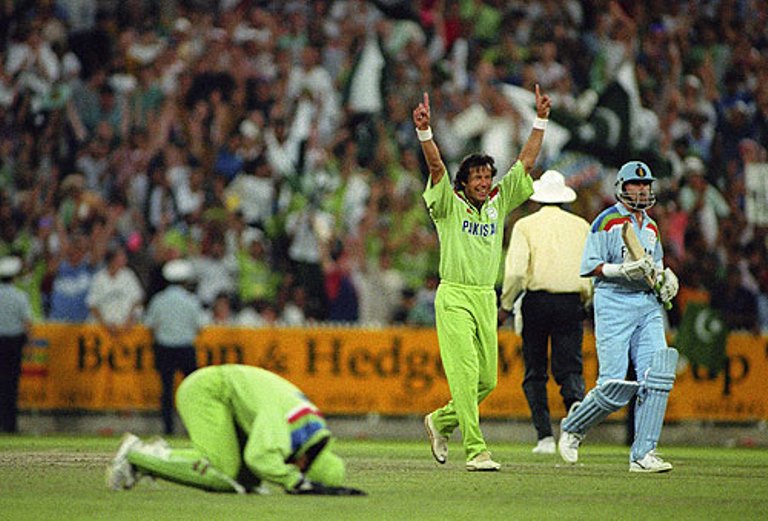 Photo: AFP[/caption]
Despite the negative build up to the event in March 2016, we should try to see the positive side of this team; they have just the right mix of players to be least expected to win the tournament. Hence, this team might just bring a baggage of surprises that we all secretly yearn for.
As the T20 world cup is about to begin, the state of our fans resemble the Pakistani cricket team at the moment; low on energy and charisma. The agitated supporters cannot be blamed. While other teams prepare to peak at the right time before the world cup, our team has been doing exactly the opposite. A T20 series
Photo: AFP[/caption]
Despite the negative build up to the event in March 2016, we should try to see the positive side of this team; they have just the right mix of players to be least expected to win the tournament. Hence, this team might just bring a baggage of surprises that we all secretly yearn for.
As the T20 world cup is about to begin, the state of our fans resemble the Pakistani cricket team at the moment; low on energy and charisma. The agitated supporters cannot be blamed. While other teams prepare to peak at the right time before the world cup, our team has been doing exactly the opposite. A T20 series 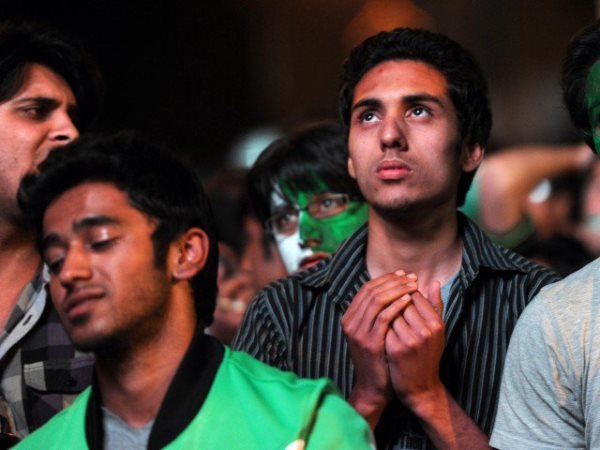 Photo: AFP[/caption]
Some of us are furious at the selectors, some are trying to keep track of
Photo: AFP[/caption]
Some of us are furious at the selectors, some are trying to keep track of  Photo: AFP[/caption]
A chaotic lead up to the World Cup is something Pakistani fans are accustomed to, so no surprises there. However, more often than not, when we enter a tournament as underdogs we bring heaps of entertainment. So Pakistani fans, let us all get out our Pakistan t-shirts, put aside our grudges and support the men in green! We don’t know if they will win the cup or not, however, without our support they will most certainly lose.
[caption id="" align="alignnone" width="600"]
Photo: AFP[/caption]
A chaotic lead up to the World Cup is something Pakistani fans are accustomed to, so no surprises there. However, more often than not, when we enter a tournament as underdogs we bring heaps of entertainment. So Pakistani fans, let us all get out our Pakistan t-shirts, put aside our grudges and support the men in green! We don’t know if they will win the cup or not, however, without our support they will most certainly lose.
[caption id="" align="alignnone" width="600"]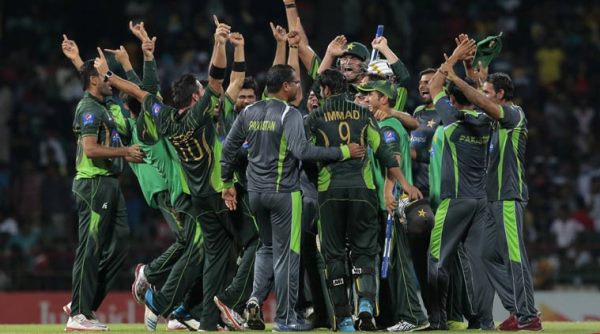 Photo: AP[/caption]
Recent poor performances should not deter the passion of Pakistani cricket fans. It is about time we believe in our players and back our own team. Now is the time for the players and the fans to stand united and not abandon one another.
[poll id="461"]
Photo: AP[/caption]
Recent poor performances should not deter the passion of Pakistani cricket fans. It is about time we believe in our players and back our own team. Now is the time for the players and the fans to stand united and not abandon one another.
[poll id="461"]
 Do we talk about the man who when swings at the cricket ball, a whole nation holds its breath willing the ball to sail over the boundary line?
Do we talk about the man who when swings at the cricket ball, a whole nation holds its breath willing the ball to sail over the boundary line? Do we talk about the man who with his trademark star man pose instils hope into a nation?
Do we talk about the man who with his trademark star man pose instils hope into a nation? How can we forget his Asia cup performance against Bangladesh?
How can we forget his Asia cup performance against Bangladesh? The vestiges of our long gone childhood will be over, nothing but the memories of Afridi, Waqar Younis, Wasim Akram, Inzamamul Haq, Saeed Anwar and Shoaib Akhtar will remain.
The vestiges of our long gone childhood will be over, nothing but the memories of Afridi, Waqar Younis, Wasim Akram, Inzamamul Haq, Saeed Anwar and Shoaib Akhtar will remain. Cricket will never see another Afridi again, a man who swung between sheer lunacy and sheer brilliance.
Cricket will never see another Afridi again, a man who swung between sheer lunacy and sheer brilliance.
 Photo: AP[/caption]
However, as the sun rose 10 days later, so did a new feeling of hope amongst most cricket lovers in the country, as PCB named
Photo: AP[/caption]
However, as the sun rose 10 days later, so did a new feeling of hope amongst most cricket lovers in the country, as PCB named  Photo: AP[/caption]
After seeing him perform with the bat, the then head coach, Waqar Younis, tried him as an opener
Photo: AP[/caption]
After seeing him perform with the bat, the then head coach, Waqar Younis, tried him as an opener  Photo: PSL[/caption]
All in all, there is a lot to be excited about when thinking about the prospect of this little fellow leading our team green in the shortest format of the game.
But, is he the
Photo: PSL[/caption]
All in all, there is a lot to be excited about when thinking about the prospect of this little fellow leading our team green in the shortest format of the game.
But, is he the 
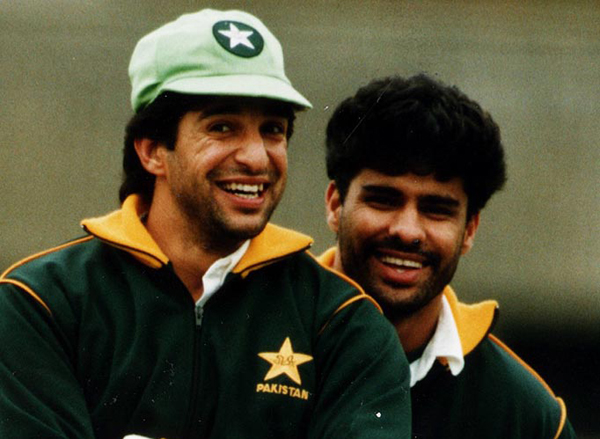 Wasim Akram and Waqar Younis, he best fast bowling pair of all time in subcontinent!
Wasim Akram and Waqar Younis, he best fast bowling pair of all time in subcontinent!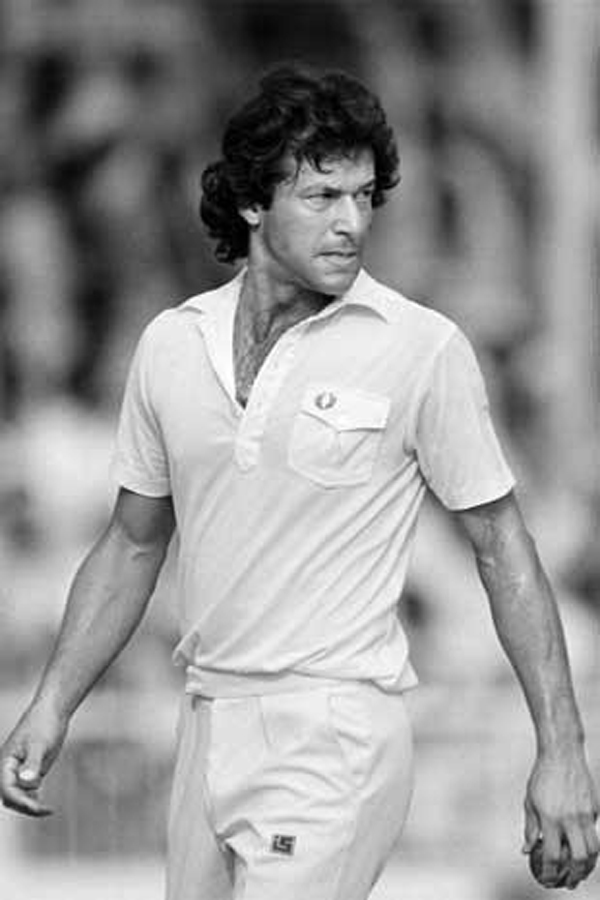 Imran Khan - The Lion of Pakistan : he was Pakistan's most successful cricket captain, leading his country to victory at the 1992 Cricket World Cup, playing for the Pakistani cricket team from 1971 to 1992, and serving as its captain intermittently throughout 1982–1992
Imran Khan - The Lion of Pakistan : he was Pakistan's most successful cricket captain, leading his country to victory at the 1992 Cricket World Cup, playing for the Pakistani cricket team from 1971 to 1992, and serving as its captain intermittently throughout 1982–1992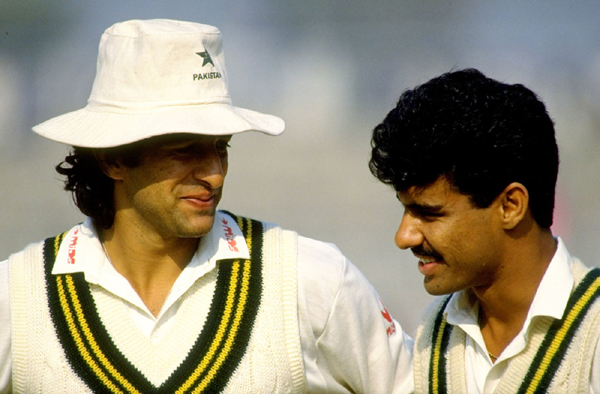 Portrait of Pakistan fast bowlers Wasim Akram (left) and Waqar Younis during the Third Test match against the West Indies at Gaddafi Stadium in Lahore, Pakistan. The match ended in a draw. (December 06, 1990)
Portrait of Pakistan fast bowlers Wasim Akram (left) and Waqar Younis during the Third Test match against the West Indies at Gaddafi Stadium in Lahore, Pakistan. The match ended in a draw. (December 06, 1990) Australian cricketing heroes Dennis Lillee and Jeff Thomson (pictured together in 1975)
Australian cricketing heroes Dennis Lillee and Jeff Thomson (pictured together in 1975)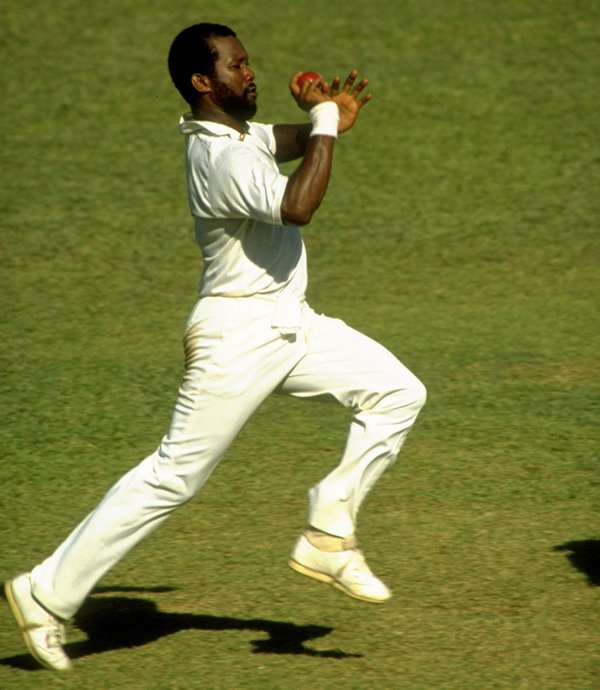 Malcolm Marshall
Malcolm Marshall Great all-rounder Richard Hadlee played with his elder brothers in the 1975 World Cup against England.
Great all-rounder Richard Hadlee played with his elder brothers in the 1975 World Cup against England. Mohammad Amir
Mohammad Amir
 Nasimul Ghani
Nasimul Ghani Ajit Agarkar
Ajit Agarkar Pakistan's Mohammad Amir.
Pakistan's Mohammad Amir. Misbah-ul-Haq celebrates his century on the first day of the first Test.
Misbah-ul-Haq celebrates his century on the first day of the first Test. Bob Simpson
Bob Simpson Misbah is not dictatorial, yet commands authority.
Misbah is not dictatorial, yet commands authority. Scoring a century at Lord’s at the pinnacle of his career is a great achievement for Misbah.
Scoring a century at Lord’s at the pinnacle of his career is a great achievement for Misbah.
 Yasir Hameed
Yasir Hameed Shabbir Ahmed
Shabbir Ahmed Yasir Arafat
Yasir Arafat Asim Kamal
Asim Kamal
 Faf du Plessis charged with ball tampering.
Faf du Plessis charged with ball tampering. Virat Kohli's actions were not cited by the umpire or the match referee after the match.
Virat Kohli's actions were not cited by the umpire or the match referee after the match. Akhtar (L), celebrates after bowling England's Jonathan Trott (R), for 3 runs on the fifth One Day International cricket match between England and Pakistan at the Rose Bowl.
Akhtar (L), celebrates after bowling England's Jonathan Trott (R), for 3 runs on the fifth One Day International cricket match between England and Pakistan at the Rose Bowl.
 Nasir Jamshed.
Nasir Jamshed. Sharjeel Khan struck 16 fours and 9 sixes in his innings.
Sharjeel Khan struck 16 fours and 9 sixes in his innings. Khalid Latif (L) playing for Pakistan against England.
Khalid Latif (L) playing for Pakistan against England. Salman Butt plays a shot in a domestic tournament.
Salman Butt plays a shot in a domestic tournament. Photo: Cricket Australia[/caption]
Unfortunately, it isn’t just the fans, but Pakistani sports writers as well, who fall victim to sentiment. I recall when I questioned the hero worship
Photo: Cricket Australia[/caption]
Unfortunately, it isn’t just the fans, but Pakistani sports writers as well, who fall victim to sentiment. I recall when I questioned the hero worship  Wasim Akram.
Wasim Akram. Pakistan's Inzamam-ul-Haq gestures after playing on the fifth day of their second test cricket match against South Africa at Gaddafi Stadium in Lahore October 12, 2007.
Pakistan's Inzamam-ul-Haq gestures after playing on the fifth day of their second test cricket match against South Africa at Gaddafi Stadium in Lahore October 12, 2007. Waqar Younis.
Waqar Younis.

 Pakistan celebrate in triumph after winning the 1992 World Cup despite not being favourites. Photo: ESPNcricinfo[/caption]
Nothing exemplified this more than
Pakistan celebrate in triumph after winning the 1992 World Cup despite not being favourites. Photo: ESPNcricinfo[/caption]
Nothing exemplified this more than 
 Pakistan with the Champions Trophy. Photo: Getty Images[/caption]
Before the
Pakistan with the Champions Trophy. Photo: Getty Images[/caption]
Before the  Mohammad Amir takes flight after picking up a wicket, India v Pakistan, Final, Champions Trophy 2017, The Oval, London, June 18, 2017. Photo: Getty Images[/caption]
Amir has been
Mohammad Amir takes flight after picking up a wicket, India v Pakistan, Final, Champions Trophy 2017, The Oval, London, June 18, 2017. Photo: Getty Images[/caption]
Amir has been  'Nuff said, Champions Trophy 2017, India v Pakistan, Final, Champions Trophy 2017, The Oval, London, June 18, 2017. Photo: PA[/caption]
And yet while so many were surprised by the result, students of cricket will have looked at this game at the Oval and known that Pakistan are a team you can never write off when visiting South London.
'Nuff said, Champions Trophy 2017, India v Pakistan, Final, Champions Trophy 2017, The Oval, London, June 18, 2017. Photo: PA[/caption]
And yet while so many were surprised by the result, students of cricket will have looked at this game at the Oval and known that Pakistan are a team you can never write off when visiting South London.
 Fazal Mahmood of Pakistan bowls, Cambridge University v Pakistan, tour match, Fenner's, 12 May, 1954. Photo: PA[/caption]
Fazal Mahmood of Pakistan bowls, Cambridge University v Pakistan, tour match, Fenner's, 12 May, 1954. Photo: PA[/caption]
 Asif Iqbal, player portrait, June 7, 1971. Photo: Getty Images[/caption]
The
Asif Iqbal, player portrait, June 7, 1971. Photo: Getty Images[/caption]
The  Waqar Younis (left) and Wasim Akram hold up the trophy after the win, England v Pakistan, fifth Test, day four, The Oval, August 9, 1992. Photo: Getty Images[/caption]
One cannot discuss Pakistan at the Oval without mentioning the
Waqar Younis (left) and Wasim Akram hold up the trophy after the win, England v Pakistan, fifth Test, day four, The Oval, August 9, 1992. Photo: Getty Images[/caption]
One cannot discuss Pakistan at the Oval without mentioning the  Umpires Darrell Hair,centre, and Billy Doctrove, left, confront Inzamamul Haq over the state of the match ball during the 2006 Oval Test between England and Pakistan. Photo: Chris Young / PA Wire / PA[/caption]
Pakistan have since gone some way to righting the wrongs of 2006, winning on their last two visits to the Oval in 2010 and
Umpires Darrell Hair,centre, and Billy Doctrove, left, confront Inzamamul Haq over the state of the match ball during the 2006 Oval Test between England and Pakistan. Photo: Chris Young / PA Wire / PA[/caption]
Pakistan have since gone some way to righting the wrongs of 2006, winning on their last two visits to the Oval in 2010 and  Pakistan celebrate their win over England in fourth Test at Kia Oval, August 14, 2016. Photo: Reuters[/caption]
Plans are now afoot to
Pakistan celebrate their win over England in fourth Test at Kia Oval, August 14, 2016. Photo: Reuters[/caption]
Plans are now afoot to 
 Hasan Ali exhibits his trademark celebration, Pakistan v Sri Lanka, 3rd ODI, Abu Dhabi, October 18, 2017. Photo: AP[/caption]
Moreover, he recently became the
Hasan Ali exhibits his trademark celebration, Pakistan v Sri Lanka, 3rd ODI, Abu Dhabi, October 18, 2017. Photo: AP[/caption]
Moreover, he recently became the  Hasan Ali takes a lap of honour, India v Pakistan, Champions Trophy, final, The Oval, London, June 18, 2017. Photo: Getty[/caption]
Although these numbers have propelled Ali to the top of the ICC rankings for ODI bowlers, what these figures do not show is his athleticism in the field. He is one of the nimblest fielders in the Pakistan side. Furthermore, although he has earned most of the accolades for his performances in ODIs, he is equally frightening in T20Is. In just 12 T20Is, he has swallowed 18 batsmen at an
Hasan Ali takes a lap of honour, India v Pakistan, Champions Trophy, final, The Oval, London, June 18, 2017. Photo: Getty[/caption]
Although these numbers have propelled Ali to the top of the ICC rankings for ODI bowlers, what these figures do not show is his athleticism in the field. He is one of the nimblest fielders in the Pakistan side. Furthermore, although he has earned most of the accolades for his performances in ODIs, he is equally frightening in T20Is. In just 12 T20Is, he has swallowed 18 batsmen at an  Hasan Ali took 3 for 23 in the first T20I, Pakistan v Sri Lanka, 1st T20I, Abu Dhabi, October 26, 2017. Photo: AP[/caption]
This is certainly an impressive start to one’s international career.
The aforementioned figures have made Ali one of the rising stars in world cricket, and an inspiration for millions in Pakistan. While Pakistan maybe the most unpredictable team in the world when it comes to its performance, one thing is quite predictable now, the
Hasan Ali took 3 for 23 in the first T20I, Pakistan v Sri Lanka, 1st T20I, Abu Dhabi, October 26, 2017. Photo: AP[/caption]
This is certainly an impressive start to one’s international career.
The aforementioned figures have made Ali one of the rising stars in world cricket, and an inspiration for millions in Pakistan. While Pakistan maybe the most unpredictable team in the world when it comes to its performance, one thing is quite predictable now, the 






